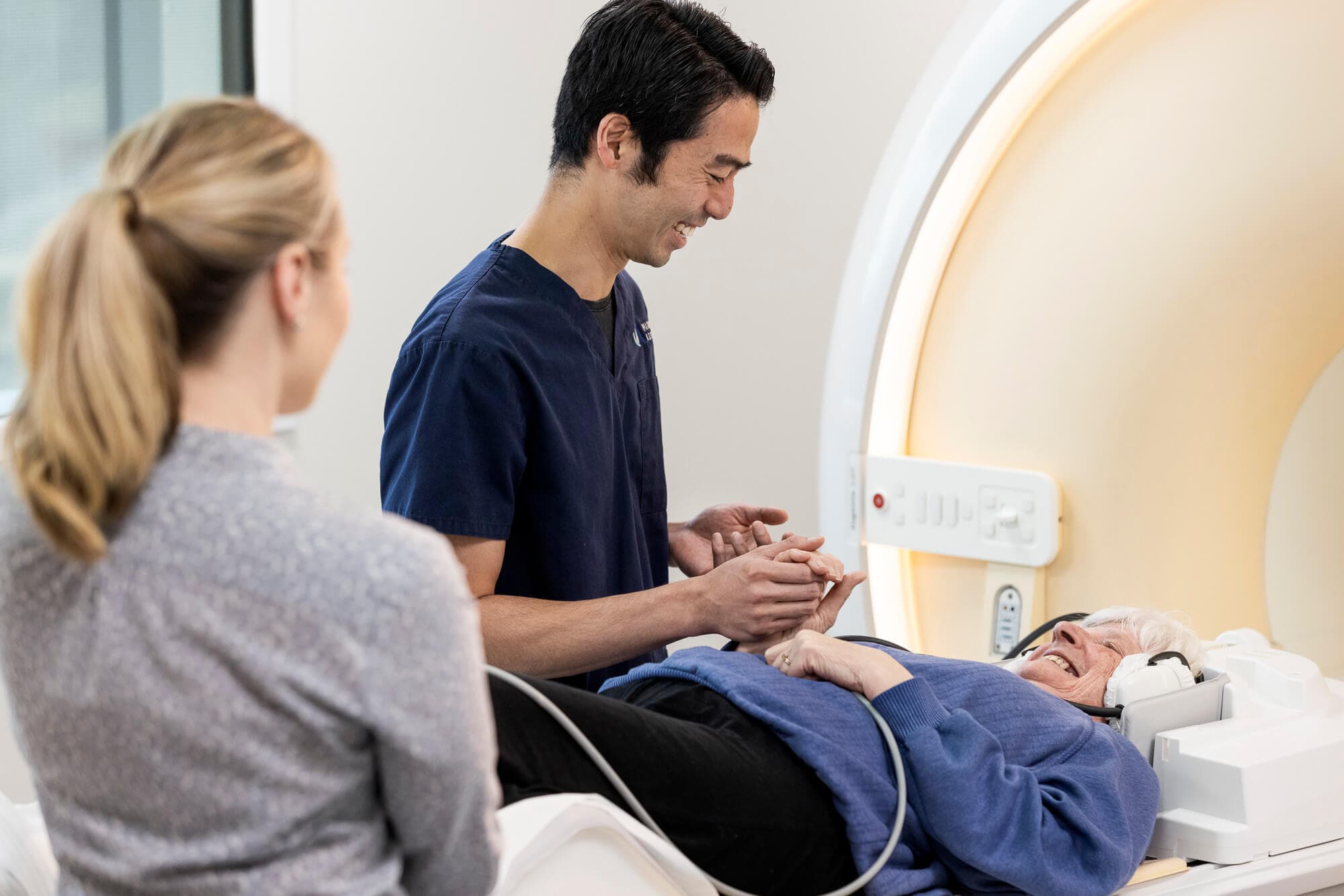We have a strong reputation as leaders in MRI scan services. Our experienced radiologists are strongly committed to education, research and fellowship training. Our MRI fellowship program is highly sought after by radiologists from around Australia and New Zealand.

What is an MRI scan?
MRI (Magnetic Resonance Imaging) is a non-invasive medical test that clinicians use to diagnose and treat certain conditions. MRI machines use a magnetic field and pulses of radio waves to produce detailed images of organs and structures inside the body. A great advantage of an MRI scan is that it doesn’t use ionising radiation (x-rays) and it provides very detailed information on structures that may not be seen as well on X-Ray, Ultrasound or CT scan.
MRI scans have revolutionised medical imaging. They image protons in the water molecules in our body that act like tiny magnets. MRI uses magnetic fields and incredibly sensitive coils to detect changes in the protons after application of magnetic fields. As such, the scans can provide exquisite detail of most parts of the body.
As with the evolution of computers, MRI scans have reduced in time and increased significantly in resolution allowing us to detect extremely subtle abnormalities. MRI uses no radiation and as such is safe for all ages. MRI complements our other imaging tools such as X-Ray, Ultrasound and CT scan.
What happens during an MRI?
The MRI unit is shaped like a short tube, open at both ends and is brightly lit. The patient lies in its centre on a moveable table. The body part being imaged is placed centrally within the tunnel and a receiving device or coil is placed on or around that part. The scanner can be noisy and earplugs and headphones are used. The scans vary in length from 15 – 45 minutes. An experienced technician will be in regular communication throughout the study. If you need to talk to us, the MRI team will give you a buzzer. Despite the earplugs you will hear rhythmic electrical sounds and may feel vibrations, all of which are normal. You may feel some warmth in the area being scanned. It is important that you remain as still as possible during the study so we can obtain the best possible scans.
Once completed, your study is sent to our specialist MRI radiologists for interpretation and reporting. Our radiologists have an enormous depth of knowledge in all MRI subspecialties ensuring that we always have the appropriate doctor to read your scans.
How do I book an MRI near me?
Book an MRI scan by completing our booking form or calling your nearest Imaging Associates radiology clinic now. MRI bookings are available at the below Imaging Associates locations.
- Melbourne VIC – Balaclava, Box Hill, Carlton, Clyde, Narre Warren, Rowville
- Gippsland VIC – Drouin, Warragul, Wonthaggi
- Wagga Wagga NSW – Edward Street
Imaging Associates accepts MRI bookings on all medical imaging referrals, even if written or printed on another radiology company’s request form.
Book an appointment
What do you need to know about your MRI booking?
Generally, MRI does not require any preparation. You will be advised upon booking if your particular examination requires you to fast or to arrive early. Otherwise, eat and drink normally and take all your regular medication.
What do we need to know?
Please advise us if you are pregnant or think you might be pregnant, or if you are breastfeeding.
In this section
CT ScanLung Cancer ScreeningAbdomen CT ScansCT Pulmonary AngiogramCT Coronary AngiogramCT Calcium ScoreCT Lumbar SpineDental X-RayX-RayDEXA ScanFluoroscopyInterventional Breast ProceduresInterventional Radiology: Sports, Spinal and Pain Management3D MammogramMagnetic Resonance Imaging (MRI)Nuclear MedicineUltrasoundPregnancy UltrasoundWomen’s Imaging
Book an MRI scan
Complete our booking form to request an appointment at an Imaging Associates radiology clinic near you.
Book now



